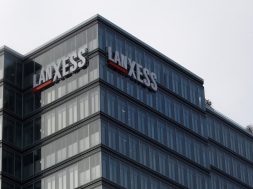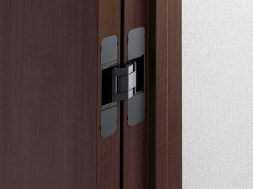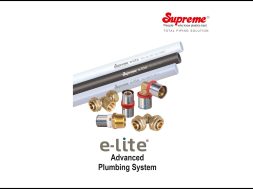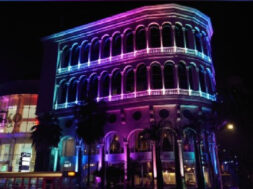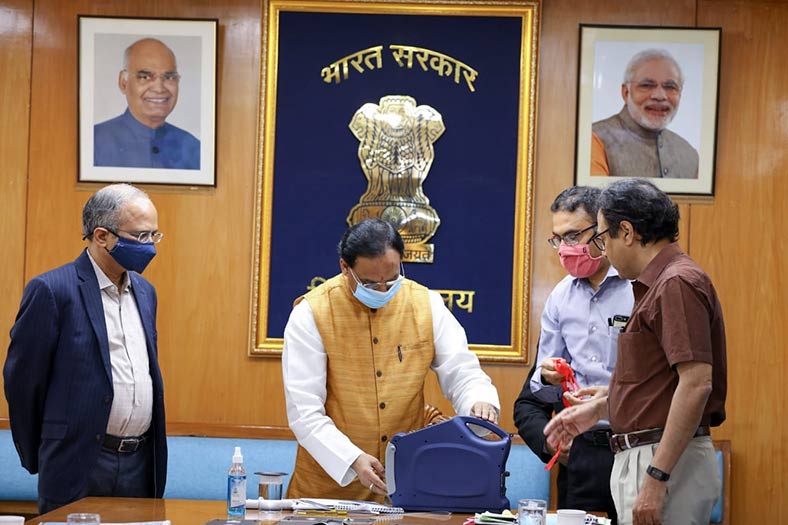Advance waterproofing systems for preventing water leakages at homes
Water seepage occurs mainly from external wall, window, roof, or from ceiling which may cause water staining, peeling off of paint or wall paper, water dripping, growth of fungus, defective concrete, plaster, debonding of tiles and rust staining. This could be due to a variety of reasons. They are common defects in causing nuisances to occupiers across floors. It is sometimes very difficult to identify the source or cause of water seepage for which an extensive investigation may be necessary to track down the source of leakage. Many homeowners often ask for a list of warning signs of water leakage and damage. Such queries come more often in the cities that endure excessive rainfall, prolonged rainy season such as Mumbai. It is extremely important in such places to have a list as a guide for self-inspection in the hope that they might have an early detection of problems and consequently their timely redressal. A tentative check list is given below for a ready reference along with remedial measures and solutions.
Leakages from roofs such as flat roofs, podium roofs etc.
The main reasons for water leakages are water stagnation, inadequate slope for drainage of rain water and damage or deterioration of waterproofing system. Leakage occurs through pores and connected capillaries in the concrete structures there by corroding the reinforcement. Sometimes defective enclosure for water tanks, cracks of parapet walls affects the waterproofing systems. Inadequate protection of roof slab or improper installation of waterproofing system may also lead to leakages.
Waterproofing of Terraces and Balconies
People are still following the old traditional methods of brick bat coba or china mosaic for waterproofing of terraces and balconies. But if some cracks develop through these surfaces due to some reasons then instead of waterproofing they become source of water storage as bricks are porous in nature. This can be avoided by using latest waterproofing materials such as liquid-applied acrylic co-polymer based coating or a membrane. These are more elastic and suitable for anticipated movements in the roof structure. Because of their higher crack bridging ability they hide the hair line cracks which develop on the roof surface. Liquid applied coating can also be exposed to weather and sunlight but membranes require protection such as cement sand screeding. Life span of such materials is more than 8-10 years. But the most important is to provide a suitable gradient of 1:80 to 1:100 to surface to avoid any ponding of water. The other points to be noted are required thickness of the waterproofing materials, overlapping of the material at junctions, upturns of the material at parapets and walls, protruding of pipes and ducts, and overall the surface preparation and right method of application of such materials. These materials can be used over existing brick bat coba or china mosaic surface without dismantling the old water proofing system. Comparing to dead load of brick bat coba these polymeric waterproofing material hardly add any weight to the surface.
Damp patches on walls
Water penetration take place through external wall defects such as hairline cracks, joints, honeycombs, spalling, weak points, holes, punctures and leftovers of debris. The hairline cracks begin to grow further, allowing seepage of water. The movement of external wall components leads to settlement cracks on the wall. Also, water penetration takes place through defective external wall finishes such as loosened mosaic tiles, cracked ceramic tiles & paint surface, poor cladding or curtain walls constructions. Another cause may be due to water leakage through walls between units of pre-fabricated elements.
Waterproofing of External walls
In most of the buildings in Mumbai the external walls are repaired for shrinkage cracks which may be mistaken as some decorative treatments by any newcomer. The external walls can be protected by an acrylic based coating which are highly elastomeric and prevent ingress of moisture through hairline cracks. They can be tinted for any desired colour for a highly decorative coating. They have very low dirt pick characteristics making the coated surfaces looking glossy. They have a long service life of 6-8 years. They are excellent coating for application on external cementitious surfaces in a highly humid and marine climate like Mumbai. They are not only durable but make the building durable by acting as a strong barrier between the substrate and the extreme environment.
The old and heritage buildings of stone and brick masonry should be protected with a water repellent such as Silliconate based coating. It is a transparent coating which does not change the original colour of the building. It is nonstaining and prevents the ingress of moisture into the masonry surfaces. It also prevents the efflorescence and growth of fungus on external surfaces. It is very much suitable for protection of such masonry buildings.
Treatment of dampness of internal walls
All the internal dampness of walls, ceilings, bathroom, toilet, and kitchen can be repaired with an epoxy based damp proof coating. For internal areas having moisture such coating can be used as putty with OPC white cement. But this cannot be used in areas having excessive dampness; a crystalline coating will be suitable for such areas.
Growth of mold, mildew and fungus inside the building
Due to ingress of moisture the growth of mold, mildew and fungus take place inside the building. All these become visible after colonization of spores and showing discoloration of paints and coatings and creating unhygienic atmosphere inside the buildings. This can be prevented or repaired with application of a polyurethane based anti-microbial coating.
Leakages from internal wet areas
Leakage from bathrooms or kitchens usually caused by seepage from fitments, bathtubs, shower trays, buried pipes or drains due to improper construction of joints and improper installation of sealants. The inadequate slope of such floors may lead to water stagnation for some times due to which water may penetrate through the tile joints. Waterproof cement rendering underneath floor tiles for the floor not installed properly and improper installation of sockets or conduits are some of other causes of bathroom leakages.
Waterproofing of internal wet areas
Before doing the waterproofing layer of a floor, all the sanitary fitments and finishes should be treated with appropriate waterproofing systems. Waterproof cement sand screeding or other similar materials is commonly used for this purpose. The screeding should be applied to have sufficient upturns at the base of the walls, and have an adequate gradient of 1: 40 to 1:60 at the floor for draining out water immediately and to prevent water ponding. Sanitary fitments are to be installed on top of the waterproofing layer without penetrating it.
The floor surface under the bathtub or shower tray should be given proper slope to avoid trapping water at their bases. Tiles should be fully bedded with tile adhesives. After applying the floor finishes, the joints between tiles should be grouted properly with tile grouts. Junctions of wall finishes and bathtub or shower trays should be sealed with suitable silicon sealant. Gaps between marble tiles should be fixed with flexible waterproofing joint sealant to prevent long term minor movement giving rise to cracks for water penetration.
Leakages from metal pipe surfaces
Seepage through defective joints or pipes caused by poor installation or differential movements and settlements are the main causes of water leakages from metal pipes. Corrosion of metal pipes at junctions with floors or walls, invasion of water into conduits, blockage in pipes leading to excessive pressure built up or sometimes attack by rodents or roots of plants causing damage of metal pipes and leakages occurring at these locations. In case of exposed supply pipes or drains there may be inadequacy in design of drains such as insufficient diameter, bends being too sharp, etc. Also blockage of drains at the junction of bends or traps, open joints such as hoppers of down pipes may lead to leakages of water.
Leakage through joints
The leakage through the windows may be due to forming of gaps between window frame and masonry, between the lintel beam and masonry and through the alumimium frame and window sill. The leakage occurs through other joints such as expansion and contraction joints, joints between columns and beam with masonry and all sanitary fittings.
Sealing of leakages at windows
Instead of sealing the gaps between frame and masonry with putties, the same can be sealed with an acrylic sealant which acts as a gap filler. The minor movement at these joints cannot be accommodated by a normal putty for which defect arises after some period of time which can be avoided by sealing with an acrylic sealant. Sillicone sealants can also be used for sealing those gaps.
Treatment at Joints
People often use cement mortar to seal the gap between masonry and RCC beam and columns of the structures. Chicken mesh also widely being for this purpose. Because of different types of materials they expand and contract differently for which cracks develop afterwards. This can be treated with a silicone sealant or applying a polymer modified mortar which can take care of expansion and contraction. All sanitary joints can be sealed with sillicone sealants. The other expansion and contraction joints of structural members of large buildings can be treated with polysulphide sealants to prevent leakages through these joints.
Musty smell coming from the basement may be subtle but grows stronger.
This may be due to inadequate or damage of tank waterproofing systems (due to movements or punctures) and also may be due to deterioration of water stops at construction and movement joints.
Basement waterproofing
Basement waterproofing requires a thorough study of site conditions including types of soil, ground water table and pollutants present in the soil and also external environment related to humidity, moisture temperature and required internal environment in terms of dryness. The various systems of basement waterproofing includes tanked protection where a liquid applied coating or membrane can be applied on all internal surfaces, integral waterproofing system where structure has to be designed like a water retaining structure or a combination of those two for important structures. Malls and public buildings should have additional provision of drainage system equipped with a pumping system. In case of basements all joints are very much critical which should be provided with water bar at all horizontal and vertical joints of floors and walls.
For existing basement structures facing the problem of moisture ingress, can be rectified with a crystalline coating. For basements having water seepages or leakages can be rectified by a polyurethane injection.
Treatment of rising dampness
Rising dampness occurs at the plinth level and above due to inadequate damp proof protection at plinth level. Silliconate injection grout can be used to prevent such rising dampness.
Peeling of paint from wood surfaces
If there are wood surfaces, paint begins to peel off from the window frames, doors and other surfaces. This may happen due to improper fillings around frames and deformation of frame and sashes, defective gasket, sealant or putty for window glass setting or frames. The other factor which may lead to wood surface due to moisture ingress may be due to air conditioning box or platform tilting inwards or insufficient sealant around air conditioning units. The signs of distress may be observed from the facts that appearance of powdery substances appearing on the furniture and odour coming out from furniture and draperies. An acrylic sealant or a sillicone sealant can be used to sealing at those gaps thereby avoiding those problems.
Many of the above signs become visible only after the leakages and damages reach a critical stage. It is best to inspect early and often. If any of these signs are visible, call in a professional water proofing agency. Remember that the water damage creates problems not only to your house; it additionally causes various health issues.
If you are serious about your property, you should attend to any leakages from plumbing and drainage line immediately to prevent damages to wall and structure. Terrace should be cleaned every month. All bath, water closet and kitchen nahani traps are vulnerable areas that demand careful and frequent check. All cracks on the external walls should be inspected and repaired as soon as detected.
Mind it
• Avoid nailing at parapet or any external surface
• Do not convert or change the use patterns of building segments i.e. kitchen to bedroom, toilet to kitchen etc.
• Do not puncture any structural members such as a column, beam, slab etc.
• Do not forget to apply waterproofing systems at all critical locations
Cookie Consent
We use cookies to personalize your experience. By continuing to visit this website you agree to our Terms & Conditions, Privacy Policy and Cookie Policy.


